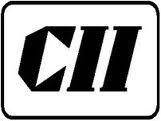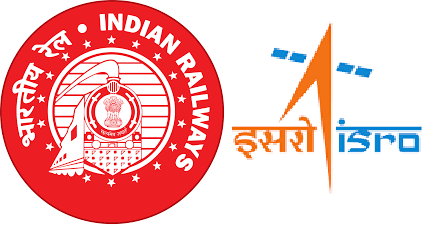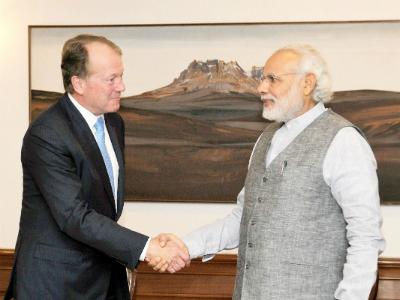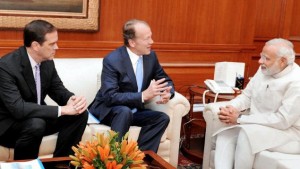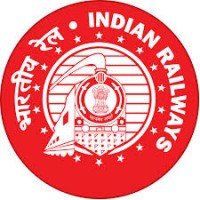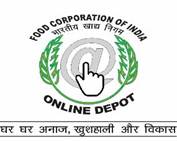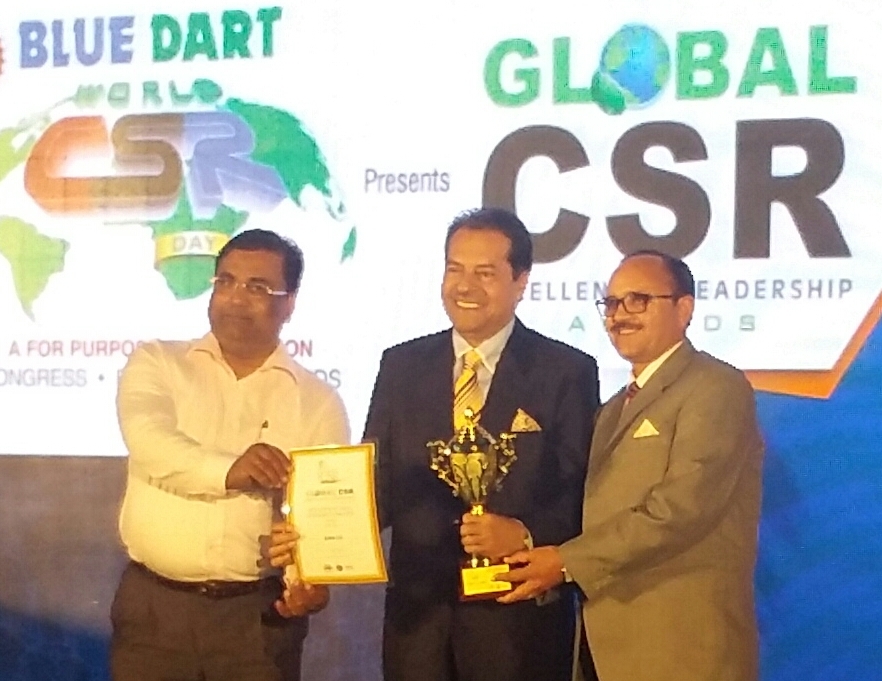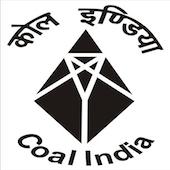With a view to use best technologies in many areas of its operations for the benefit of its passengers, in the august presence of Union Minister of Railways, Shri Suresh Prabhakar Prabhu, Union Minister of State (Independent Charge) for Development of North Eastern Region (DoNER), MoS PMO, Personnel, Public Grievances, Pensions, Atomic Energy and Space, Dr Jitendra Singh and Union Minister of State for Railways Shri Manoj Sinha, a Memorandum of Understanding (MoU) regarding “Effective Use of Space Technology in Remote Sensing and Graphic Information System (GIS) based Governance Application for Indian Railways”was signed yesterday.
Chairman, Railway Board, Shri A.K. Mital, Chairman ISRO and Secretary Department of Space, Shri Kiran Kumar Alur Seelin, Member Staff, Shri Pradeep Kumar and other Board Members, and other senior officials from both the sides were also present on the occasion. The MoU was signed by Shri Shobhan Chaudhuri, ED/Tele (Dev) on behalf of Railways whereas it was by Dr. P.G. Diwakar,Dy. Director, ISRO.
The MoU was signed in the context of Railway Minister’s special mention in his Budget Announcement regarding geospatial and enhanced use of Space technology in various sectors of governance. The MoU aimsfor developing applications in the field of Remote sensing and Geographic Information System (GIS) for remote sensing at unmanned railway crossing including ,all geospatial solutions and customized software solutions for providing reliable, efficient & optimal solutions to Railways in it various areas of operation thereby benefiting the rail user.
Speaking on the occasion, Minister of Railways Shri Suresh Prabhakar Prabhu said that the signing of this MoU with the ISRO is of a great importance which will solve all the day to day problems of Indian Railways by using best technology provided by the ISRO. He said that Railways core activity is to run trains thus Railways has to become partner with the great organizations like ISRO for its important activities. He said that it is a big challenge for the Indian Railways to keep pace with the latest technology and Railways is nowready to adopt new technologies. He said that Railways want to keep itself modernized with the new technological innovations and some of the most difficult solutions could be found by using latest technology.
In his speech, Union Minister of State (Independent Charge) for Development of North Eastern Region (DoNER), MoS PMO, Personnel, Public Grievances, Pensions, Atomic Energy and Space, Dr Jitendra Singh signing of MoU is a breakthrough for the ISRO, Department of Space to extend technological help to the Indian Railways. He said that it is a common misperception that ISRO works only in the field of Satellite and Space etc. He said that Department of Space through ISRO has been extending its help to various organizations in wide sphere for example recent agreement by ISRO with the Ministry of Urban Development in developing smart cities. He said that ISRO can even find out suspicious activities on the Railways Stations. Thus, ISRO services can not only be taken in disaster management but also can be taken in normal course. He said that its technology is cost-effective as well as accurate. He hoped better coordination and fruitful result with this MoU.
Speaking on the occasion, Minister of State for Railways said that this is a historic day for the Indian Railways to be partner with ISRO. He said that Indian Railways is committed to provide best passenger services by using the best technology and for this purpose partnering with the different organization is most important. He said that Railways is deeply concerned to find solution of late running of trains due to fog and advised ISRO to find some solution.
BACKGROUND :
Indian Railways is one of the preferred mode of transportation. Indian Railways provides safe, efficient, affordable, customer focused and environmentally sustainable integrated transportation solutions. It aims to be a modern vehicle of inclusive growth, connecting regions, communities, ports and centers of industry, commerce, tourism and pilgrimage spread over across the country. In this regard, Indian Railways envisages use of the state of art technology in day to day operations & maintenance to ensure optimum benefit to all rail users.
The vision of Indian Space Research Organisation (ISRO) is to harness Space Technology for national development while pursuing Space science research and planetary exploration.
To leverage this, a Memorandum of Understanding (MOU) is being signed between Ministry of Railways & Indian Space Research Orgnisation (ISRO) under Department of Space on 17th March 2016 at RailBhawan, New Delhi for developing applications in the field of Remote sensing and Geographic Information System (GIS) for all geospatial solutions, including customized software solutions for providing reliable, efficient and optimal solutions to Railways in it various areas of operation thereby benefiting the rail user .
Currently, Indian Railways is using Space technology for providing connectivity to Passenger Reservation System (PRS) counters and Unreserved Ticketing System at remote and non-rail head locations, Emergency Communication using Satellite phones from disaster sites, Global Positioning System (GPS) for various applications like Remote Monitoring of Locomotives, Passenger Information System in Mumbai Sub-urban trains and synchronized clocks & WiFi facility in selected Rajdhani Express trains.
Further as per the MoU, Ministry of Railways proposes to use space technology tools in providing passenger information system in all trains indicating the next station / stoppage, real time train tracking, survey of new rail route alignments particularly in hilly and difficult terrains, conduct track vulnerability studies, mapping of assets and introducing web enabled rail user centric services.


